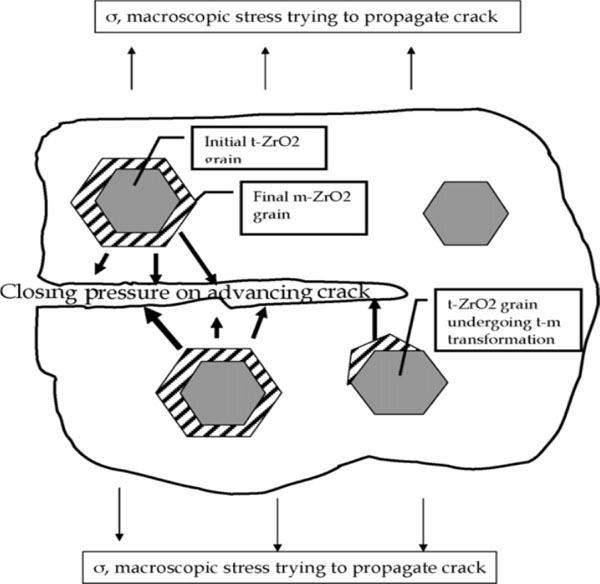Fig. (4) ”Schematic representing how the t-m transformation of ZrO2 increases fracture toughness. When a part containing metastable t-ZrO2
is subject to a remote macroscopic tensile stress, the stress intensification due to the presence of a crack tip is sufficient to transform some t-zirconia
grains to the monoclinic form. Since this transformation entails a volumetric expansion which is constrained by the surrounding
materials, the net result is compressive stress acting on the surfaces of the crack, whose propagation is thus hindered” (From Lughi and
Sergo: Dent Mater, 2010; 26: 807-820).

